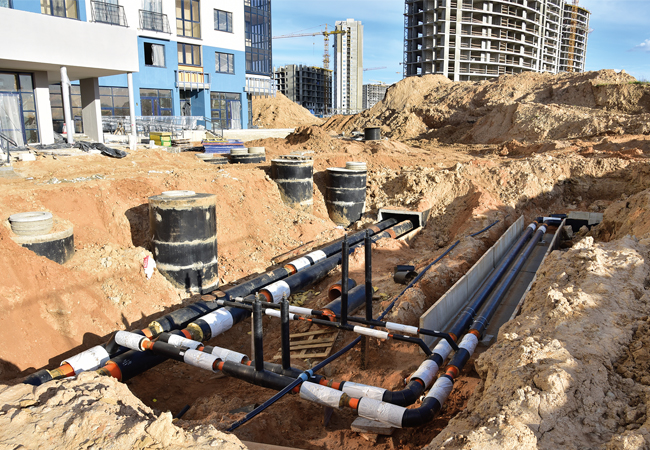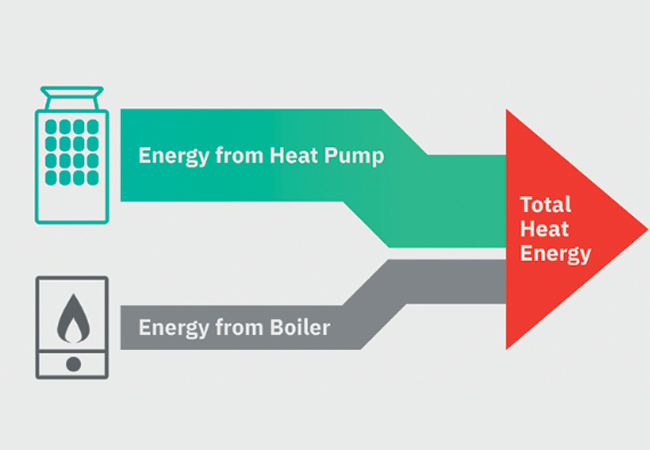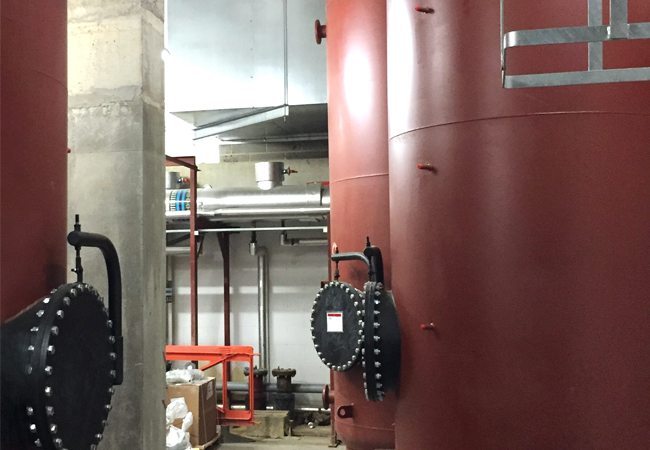
Our recent roundtable, on ensuring a balanced and responsible approach to decarbonisation of heating, generated a lively discussion on the challenges of targeting net zero carbon while providing comfortable, cost-efficient buildings.
Factors such as insufficient space for air source heat pumps (ASHPs), oversizing of equipment, noise, vibration, the importance of controls, and inadequate legislation were highlighted as key issues. The event, sponsored by Baxi and held in London, explored ways of optimising heating systems.
The panel
- Richard Brimfield, associate at Ridge and Partners
- Jason Donoghue, head of marketing at Baxi
- Louis Kimber, mechanical engineering technician at AtkinsRéalis
- Ryan Kirkwood, engineering solutions manager at Baxi
- Jeremy Owen, principal mechanical engineer at SVM Building Services Design
- Daniel Skidmore, director of building engineering at Aecom
- Mathew Stark, senior mechanical engineer at Hoare Lea
- Simon Wyatt, partner at Cundall and chair of CIBSE Knowledge Generation Panel
The participants began by describing their decarbonisation projects and challenges. Mathew Stark, a senior mechanical engineer at Hoare Lea, cited a current refurbishment scheme. ‘We wanted to remove the gas boilers and use an all-electric system with ASHPs, but planning restrictions wouldn’t allow anything too tall on the roof,’ he said. ‘The cooling system uses air cool condensers on the roof and chillers in the basement. Instead, we changed it from a constant air volume to a variable air volume system so we could at least make the system more efficient and decarbonise in that way.’
Simon Wyatt, partner at Cundall and chair of the CIBSE Knowledge Generation Panel, said many building owners are struggling with the best way to decarbonise existing buildings. They question whether they should do minor works now or carry out a deep retrofit over a phased period. Wyatt is involved in decarbonising many existing buildings. His dilemma is whether to try to keep a high-temperature heating system or upgrade the building’s fabric.
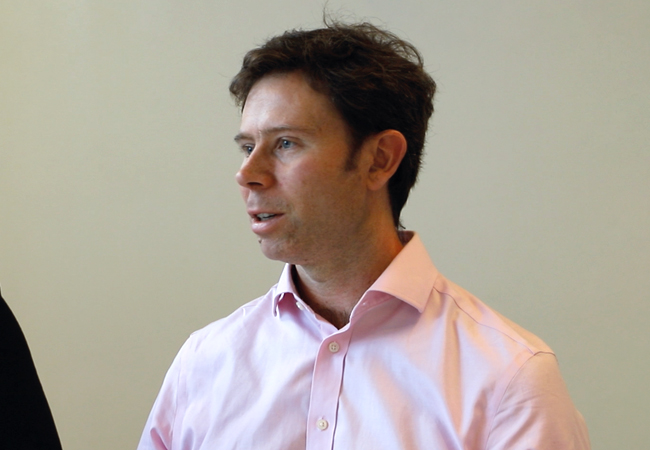
Richard Brimfield
‘I have more confidence in reducing the size of plant by the methods we use to do space heating calculations” – Richard Brimfield
‘The cost of electrification and heat pumps is expensive, but it’s a drop in the ocean compared with the cost of upgrading the fabric,’ he said. ‘If you want to hit those energy intensity targets, this is a real issue and there’s no coherent solution.’
Richard Brimfield, associate at Ridge and Partners, and founding committee member of the CIBSE HVAC Group, argued that some of the obvious challenges are finding external space for heat pumps and boreholes, identifying the heat requirement for existing buildings, and simulating how a heat pump operates. He said a current project had hugely oversized existing boilers.
The participants agreed that oversizing is a big problem. Ryan Kirkwood, engineering solutions manager at Baxi, asked whether there is now better guidance on the correct sizing of equipment within the industry. ‘Personally, I have more confidence in reducing the size of things by the methods we use to do the space heating calculations,’ said Brimfield. ‘However, we’re still oversizing things; we’re never going to get everything perfect.’

Daniel Skidmore
The controls element has been as much a culprit as the plant. We often find that there has been a lack of engagement with the facilities management team regarding the controls” – Daniel Skidmore
Wyatt said that CIBSE is considering producing guidance on efficient sizing. Although there seems to be more confidence in sizing central plant, he agreed that people are still oversizing significantly, partly because of build quality. He cited schools where there is a lot of leakage because of poor airtightness and air permeability, resulting in oversized radiators.
Daniel Skidmore, director of building engineering at Aecom, echoed these views. He highlighted the BBC, one of Aecom’s biggest clients, which wants to decarbonise much of its estate. Some difficulties encountered with this project, he said, include how flow temperatures with hot water generation are used, roof-plant acoustics and vibration, and long lead times on plant, and how this can affect the project’s planning and timing.
Jeremy Owen, principal mechanical engineer at SVM Building Services Design, said the company is installing ASHPs for a major supermarket. The noise and vibration produced by the heat pumps has been a significant problem given the proximity of housing, he added, so – at some stores – a two-storey gantry has been built above the plantroom where the ASHP and new air handling unit (AHU) are located.

Jason Donoghue
‘Baxi is supplying heating products to a full hydrogen residential trial in Redcar’ – Jason Donoghue
Noise and vibration produced by ASHPs is an issue that some manufacturers and noise specialists have said is often overlooked. Hoare Lea has an acoustics team that assesses the operation of the ASHP, and it advises architects on the type of materials and vibration mounts that should be used. ‘A lot of the kit we’re using with ASHPs is a set size, but massive generation packages are needed on site, so there are space constraints,’ said Stark. ‘The acoustics are achievable, but the space needed is challenging. So, before we even involve an acoustics specialist, we allow enough space for these packages for all residential projects, because we know we will need it.’
Owen’s other main complaint relates to the Building Regulations. ‘If we want to decarbonise, the regulations need to be amended to make it work and enable the best technologies to be put forward,’ he said, citing a frustrating experience he had with a residential new build. To achieve the SAP calculation, he had to install gas combination boilers with photovoltaics instead of heat pumps. ‘This is not right, because the SAP calculation looks at affordability,’ said Owen. ‘An ASHP is given a C rating because it’s less affordable, while a gas combi boiler with PVs gets an A rating; it’s ludicrous.’

Louis Kimber
When I suggest things such as getting rid of boilers and installing PVs, not only are costs increasing, but embodied carbon is going up too, which really concerns me” – Louis Kimber
Louis Kimber, mechanical engineering technician at AtkinsRéalis, said embodied carbon is a growing issue. He has been working with the Government Property Agency’s (GPA’s) UK sites and exploring what can be done to decarbonise.
‘Embodied carbon is not a criterion required by the GPA,’ said Kimber. ‘But when I’m writing the reports and suggesting things such as getting rid of boilers and installing PVs on the roof, not only are the costs increasing, but the embodied carbon is going up too, which really concerns me.’
Kirkwood said it was refreshing to hear his own concerns echoed. ‘We find there is a great deal of confusion and people are often looking for a quick fix,’ he added. ‘Engineers need time to engineer, to survey and to monitor. As an industry we’ve almost engineered that out and we need to engineer it back in.’

Matthew Stark
A lot of the kit we’re using with ASHPs is a set size, but massive generation packages are needed on site, so there are space constraints” – Mathew Stark
To optimise heating systems, Skidmore recommended metering be installed in existing buildings, to help understand heating use. An existing system with lower temperatures should be run to see how it behaves. Suggested improvements, he added, have included upgrades to building fabric, the introduction of ventilation, using domestic hot water with AHUs, and providing enough space for airflow in heat pumps, as correcting flows can be a problem.
Skidmore also recommended using high-efficiency chillers to take the rest of the cooling, instead of implementing a blanket approach. In buildings that have a 24/7 operation where there is a constant cooling demand, he has taken advantage of the waste heat element of ASHPs. However, he argued that ASHPs are the biggest offenders in terms of energy consumption, because they are not being controlled properly.

Ryan Kirkwood
Engineers need time to engineer, to survey and to monitor. As an industry, we’ve almost engineered that out” – Ryan Kirkwood
‘We often find that buildings aren’t running as smoothly as they should. They are sometimes running at night when they shouldn’t and not ramping down enough when they should,’ said Skidmore. ‘The controls element has been as much a culprit as the plant. We often find that there has been a lack of engagement with the facilities management [FM] team regarding the controls. There have also been issues with the FM team’s expertise of optimising and running the buildings after we’ve done the work.’
To optimise heating systems in a supermarket, Owen said they rely on a packaged plant, which is a refrigeration integrated heating and cooling system. It takes the heat of the cold aisles and puts it back into the store, and there are a couple of heating coils in the AHU.
It was agreed that education would help in situations where a setting has been changed after it was established to optimise heat rejection. Wyatt added that the design performance assessment will possibly shed light on this issue; however, many of his clients don’t take this assessment seriously enough. ‘We have 30-odd projects that have gone through design performance assessments and got their energy target rating,’ said Wyatt. ‘But not one will get anywhere near those targets. The assessment is a de-risking exercise with multiple future scenarios. It’s not like an energy performance certificate, where once you’ve passed it can be forgotten.’
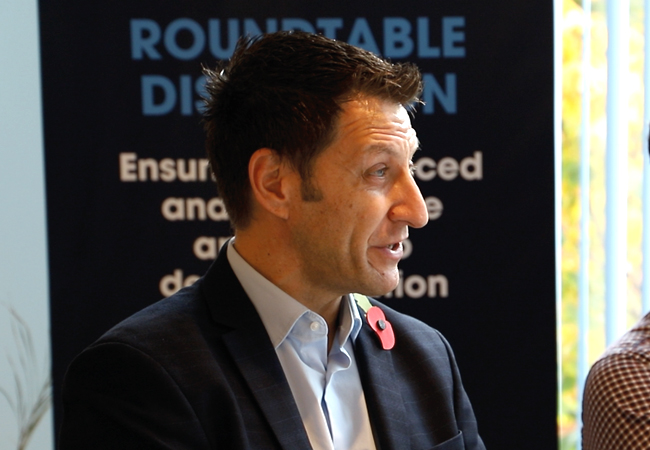
Jeremy Owen
If we want to decarbonise, the regulations need to be amended to make it work and enable the best technologies to be put forward” – Jeremy Owen
Brimfield then raised the importance of controls and the role artificial intelligence (AI) may have. Wyatt suggested there are two schools of thought: take the fully automated AI path, which seems to be the direction industry is taking, although its complexity and cost can be a barrier; or keep things as simple as possible.
The event concluded with a discussion on hydrogen being piped through the gas grid and the possibility of having localised gas storage. Skidmore said Aecom is focusing on the big district heating schemes and rolling out large projects with low carbon distribution, but he doesn’t predict hydrogen playing a major part.
Baxi has developed and tested 100% H2 boilers, and the tests prove they work just fine said Kirkwood. He says that when there a wide availability of H2, production will start. ‘We have hydrogen boilers installed in a variety of demonstration projects across the EU and UK proving that the technology is a viable solution,’ he added. ‘We’re doing what we believe is the right thing, but we’re not hanging our hat on that. We see a blended source of solutions, including heat pumps, heat networks, and, if required, hydrogen.’

Simon Wyatt
The cost of electrification and heat pumps is expensive, but it’s a drop in the ocean compared with the cost of upgrading the fabric” – Simon Wyatt
Jason Donoghue, head of marketing at Baxi, said the company had launched two more residential projects, and Baxi will be supplying hydrogen boilers to a new residential trial in Redcar. Kirkwood added that he would like to see a greater focus on heat networks. ‘One of the challenges we face is the medium-temperature heat networks,’ he said. ‘We have a huge number of heat networks sitting on the Grid that are not low carbon. Systems operating beyond where current heat pump trajectory is in terms of performance will be challenging. There’s a dichotomy between heat pumps and heat networks – they are not well suited, which is why we are investing in thermal storage research and development.’
Skidmore argued that it can be challenging to drive heat network improvements, and Wyatt agreed, adding: ‘District heat networks for existing high-density urban environments have a place, but in low-rise density, heat networks are not always the right solution.’



